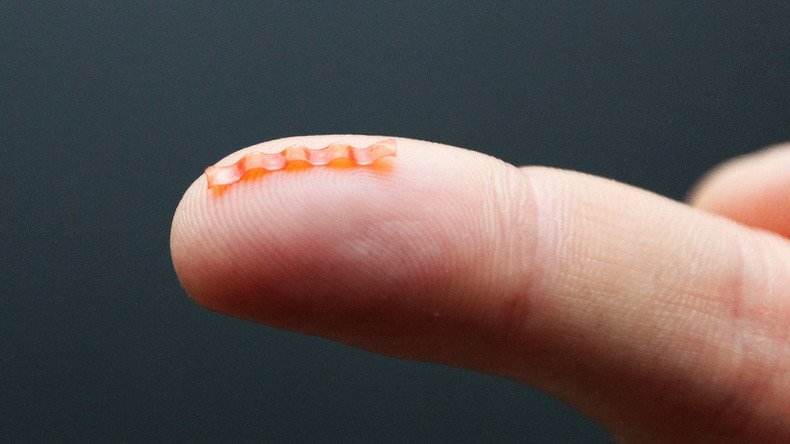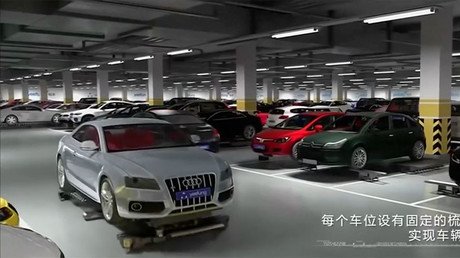Tiny light-powered caterpillar robot mimics natural crawl (VIDEO)

Using smart materials, researchers in Poland have engineered a tiny light-powered soft-bodied caterpillar robot, which is capable of mimicking the natural wavelike crawling motion and can scoot along flat surfaces and moderate slopes.
Researchers at the Faculty of Physics at the University of Warsaw have used the the liquid crystal elastomer technology which allows smart materials to undergo structural changes when exposed to heat and light to create a tiny 15mm caterpillar robot that is powered by green light.
The team utilized technology originally developed at the LENS Institute in Florence and placed a light-sensitive elastomer stripe to provide flexibility to the tiny bot’s soft body. The stripe absorbs the energy of the light delivered by a spatially modulated laser beam and transforms it into structural changes that cause movement. The caterpillar robot is able to cover distances on flat surfaces as well as climb slopes, squeeze through narrow slits and transport loads.
In their study, 'Light-Driven Soft Robot Mimics Caterpillar Locomotion in Natural Scale' recently published in Advanced Optical Material Journal, researchers explain that heat-induced deformation in a liquid crystalline elastomer stripe with patterned molecular orientation happens when the heating stage is set at 200 degrees Celsius (392 degrees Fahrenheit). The induced heat causes the body to assume a strongly curly shape, shortening it down to 20 percent of original length.
“Liquid Crystalline Elastomers (LCEs) are smart materials that can exhibit large shape change under illumination with visible light. With the recently developed techniques, it is possible to pattern these soft materials into arbitrary three-dimensional forms with a pre-defined actuation performance. The light-induced deformation allows a monolithic LCE structure to perform complex actions without numerous discrete actuators,” researchers explained in a press release.
During their experiments researchers used a laser beam with 2.5W average power to scan along the robot body. The light-induced traveling deformation propels the robot to walk or climb the slope in the direction of the slow laser beam scan. When operated manually, the laser even forced the robot to squeeze through a 0.9 mm high slit after a five-minute struggle.
Scientists hope that further research in smart material robotics will pave way for the development of micro-scale robots.
READ MORE: Brain-controlled robotics breakthrough sees paralysed patients regain mobility (VIDEOS)
“Designing soft robots calls for a completely new paradigm in their mechanics, power supply and control. We are only beginning to learn from nature and shift our design approaches towards these that emerged in natural evolution,” said Piotr Wasylczyk who led the project.













